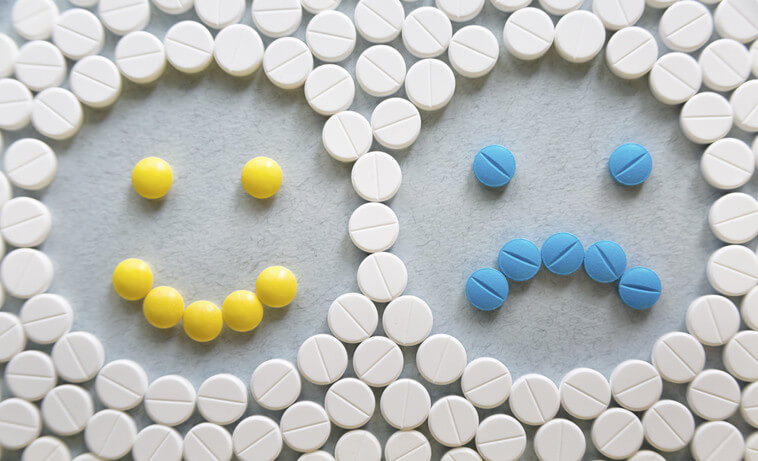If you’re struggling with depression, you may be wondering what treatment options are available to you. One option that has gained popularity in recent years is ketamine infusion therapy. But how does it compare to traditional antidepressants, and which one is right for you? In this article, we’ll explore the differences between ketamine and traditional antidepressants and help you determine which treatment option may be best for your individual needs.
What is Ketamine Infusion Therapy?
Ketamine infusion therapy involves the administration of low-dose ketamine via intravenous infusion. The treatment has been shown to produce rapid relief of depressive symptoms, often within hours or days of the first infusion. Unlike traditional antidepressants, which can take several weeks or months to take effect, ketamine produces an almost immediate response in many patients.
Ketamine works by blocking the NMDA receptor in the brain, which stimulates the production of new synapses and improves communication between neurons. This can alleviate depressive symptoms and improve mood.
What are Traditional Antidepressants?
Traditional antidepressants are a class of medication that work by altering the levels of certain chemicals in the brain, such as serotonin, norepinephrine, and dopamine. These chemicals, known as neurotransmitters, are responsible for regulating mood, sleep, appetite, and other functions.
There are several types of traditional antidepressants, including selective serotonin reuptake inhibitors (SSRIs), serotonin-norepinephrine reuptake inhibitors (SNRIs), tricyclic antidepressants (TCAs), and monoamine oxidase inhibitors (MAOIs).
Traditional antidepressants can take several weeks or months to produce noticeable improvements in mood. They also carry the risk of side effects, including nausea, dizziness, weight gain, and sexual dysfunction. In some cases, traditional antidepressants may not be effective in treating depression, especially in individuals with treatment-resistant depression.
Ketamine vs. Traditional Antidepressants: Pros and Cons
Now that we have a basic understanding of ketamine infusion therapy and traditional antidepressants, let’s explore the pros and cons of each treatment option.
Pros of Ketamine Infusion Therapy:
Rapid Relief of Symptoms: Ketamine infusion therapy produces rapid relief of depressive symptoms, often within hours or days of the first infusion. This can be especially beneficial for individuals who are experiencing severe or suicidal depression.
Alternative for Treatment-Resistant Depression: Ketamine infusion therapy is an alternative treatment option for individuals with treatment-resistant depression, who may not respond to traditional antidepressants.
Fewer Side Effects: Ketamine infusion therapy has fewer side effects than traditional antidepressants, and the side effects that do occur are usually mild and short-lived.
Cons of Ketamine Infusion Therapy:
Cost: Ketamine infusion therapy can be expensive, and insurance coverage may be limited. This can make it difficult for some individuals to access the treatment.
Limited Research: While the use of ketamine infusion therapy for depression is growing, there is still limited research on the long-term effects of the treatment.
Need for Repeat Infusions: While ketamine infusion therapy produces rapid relief of symptoms, the effects are not always long-lasting, and repeat infusions may be necessary to sustain the antidepressant effects.
Pros of Traditional Antidepressants:
Widely Available: Traditional antidepressants are widely available and are covered by most insurance plans.
Well-Studied: Traditional antidepressants have been studied extensively, and there is a large body of research supporting their use in the treatment of depression.
Different Options Available: There are several different types of traditional antidepressants, which means that individuals who don’t respond well to one medication may be able to find relief with another.
Cons of Traditional Antidepressants:
Slow Onset of Action: Traditional antidepressants can take several weeks or even months to produce noticeable improvements in mood, which can be frustrating for individuals who are struggling with depression.
Side Effects: Traditional antidepressants can cause a range of side effects, including nausea, dizziness, weight gain, and sexual dysfunction. In some cases, these side effects can be severe enough to cause individuals to stop taking the medication.
Not Effective for Everyone: While traditional antidepressants can be effective for many individuals, they may not work for everyone, especially those with treatment-resistant depression.
Which Treatment Option is Right for You?
Deciding between ketamine infusion therapy and traditional antidepressants can be a complex decision, and there is no one-size-fits-all answer. The best treatment option for you will depend on several factors, including the severity of your depression, your medical history, and your individual preferences.
Ketamine infusion therapy may be a good option for individuals who are experiencing severe or treatment-resistant depression, as well as those who need rapid relief of symptoms. However, the cost and need for repeat infusions may make it less accessible for some individuals.
Traditional antidepressants may be a good option for individuals with milder depression, those who prefer a long-term treatment plan, and those who are looking for a more affordable option. However, the slow onset of action and potential for side effects may make it less appealing for some individuals.
It’s important to note that both ketamine infusion therapy and traditional antidepressants should only be used under the guidance of a medical professional. Your doctor or mental health provider can help you determine which treatment option is best for you based on your individual needs and medical history.
Conclusion
Depression can be a debilitating condition, and finding the right treatment can be a challenging process. Ketamine infusion therapy and traditional antidepressants are two options that can be effective in treating depression, but they have their pros and cons. It’s important to weigh these factors carefully and work with a medical professional to determine which treatment option is right for you.
If you’re considering ketamine infusion therapy or traditional antidepressants, it’s important to remember that both treatments can take time to produce results. Don’t get discouraged if you don’t see immediate improvements in your mood or if you experience side effects. With patience and the guidance of a medical professional, you can find the treatment that works best for you and start on the path to recovery.

